This creamy salmon head soup is hearty and totally comforting! Using whole salmon heads, chunky potatoes, fresh dill, and heavy cream this flavorful soup is satisfying and simple to make in under an hour!
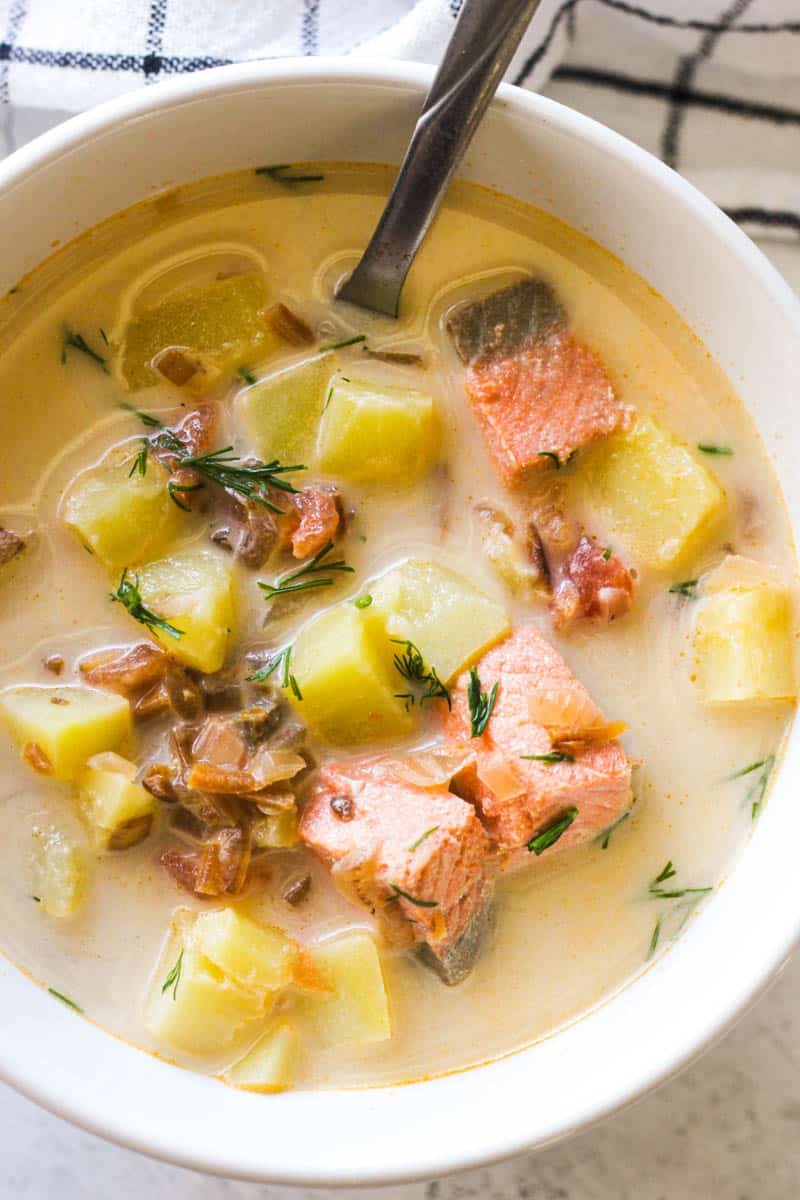
This fish head soup is a light but very comforting lunch or dinner and it comes together easily with a couple of salmon heads and a few fridge and pantry staples.
It's one of my favorite dinners to prepare and you can easily customize it to include the ingredients of your choice. Also try my roasted salmon head recipe
If you are new to cooking with fish heads, don't let the thought of cooking with them scare you! They are a great way to use up the whole fish while adding amazing flavor to whatever you put them in.
This healthy soup is packed with vitamins and minerals thanks to a nutritious homemade fish head broth, fresh veggies, and flaky fish.
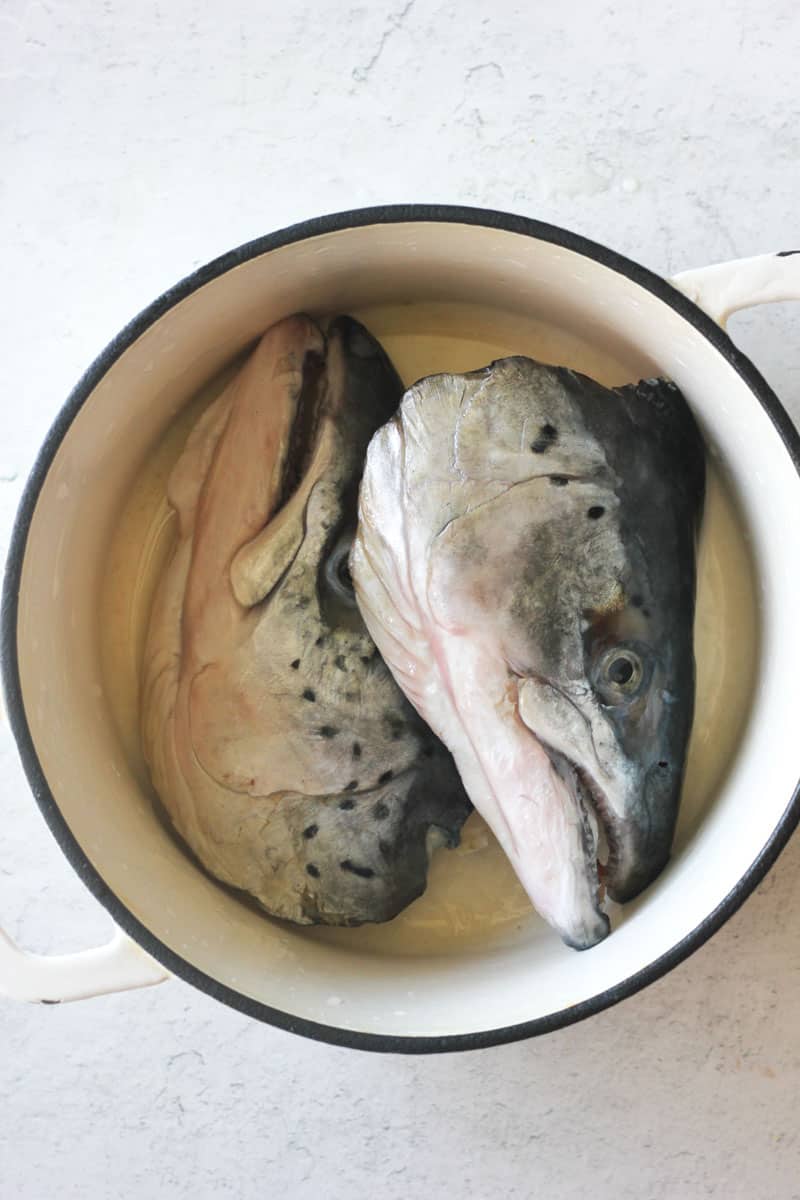
Recipe ingredients
Salmon. Use large heads because they will add the most amount of meat to your soup.
Water. The base of this soup, use more or less depending on how thick or thin you want your soup to be.
Vegetables. Cubed potatoes, shredded carrots, minced onion, and fresh tomatoes.
Heavy cream. Added so that the soup is nice and creamy and it also helps to reduce some of the fishy flavor of the salmon.
Butter. Used to cook the vegetables and give an extra boost of flavor.
Seasonings. Salt, black pepper, white pepper, fish sauce (optional), dill, and bay leaf. Fresh dill is another ingredient used to give herby flavor to the soup.
How to make salmon head soup
Start by thoroughly washing the fish heads to ensure all residue and scales are removed. Once cleaned, place them in a large pot. Pour enough water into the pot to fully submerge the fish heads. To this water, introduce a bay leaf for aromatic depth.
Season the broth with salt, pepper, and white pepper to give it a balanced flavor. Set the pot on the stove and crank up the heat to bring the mixture to a boil. Once it starts boiling, reduce the heat, allowing the broth to simmer gently.
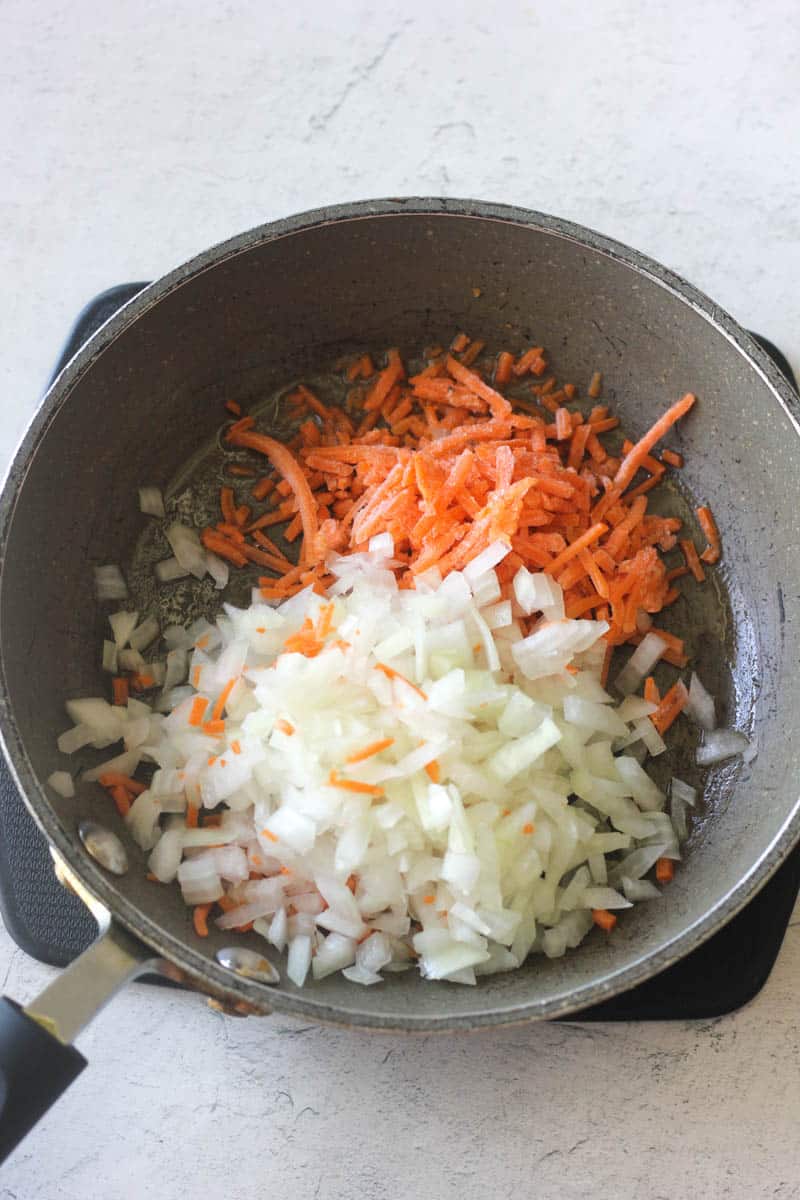
Let this process continue for about 20 minutes. After this duration, carefully remove the fish heads from the pot and set them on a plate or bowl. Make sure to keep the broth; you'll be working with it shortly.
Next, bring this flavorful broth back to a boil. Introduce cubed potatoes to the boiling broth, ensuring they are submerged. Reduce the heat again to a simmer, allowing the potatoes to cook and soften over the next 10 minutes.
While the potatoes are simmering, grab a small skillet. Into this skillet, add a generous knob of butter, letting it melt over medium heat. Once melted and sizzling, stir in finely chopped onions and shredded carrots. Sauté these veggies until they turn soft and translucent, which should take around 5 minutes.
To this skillet, add freshly chopped tomatoes and minced garlic. Mix them in and let them cook for a few more minutes, ensuring the skillet's lid is closed to trap the steam and flavors.
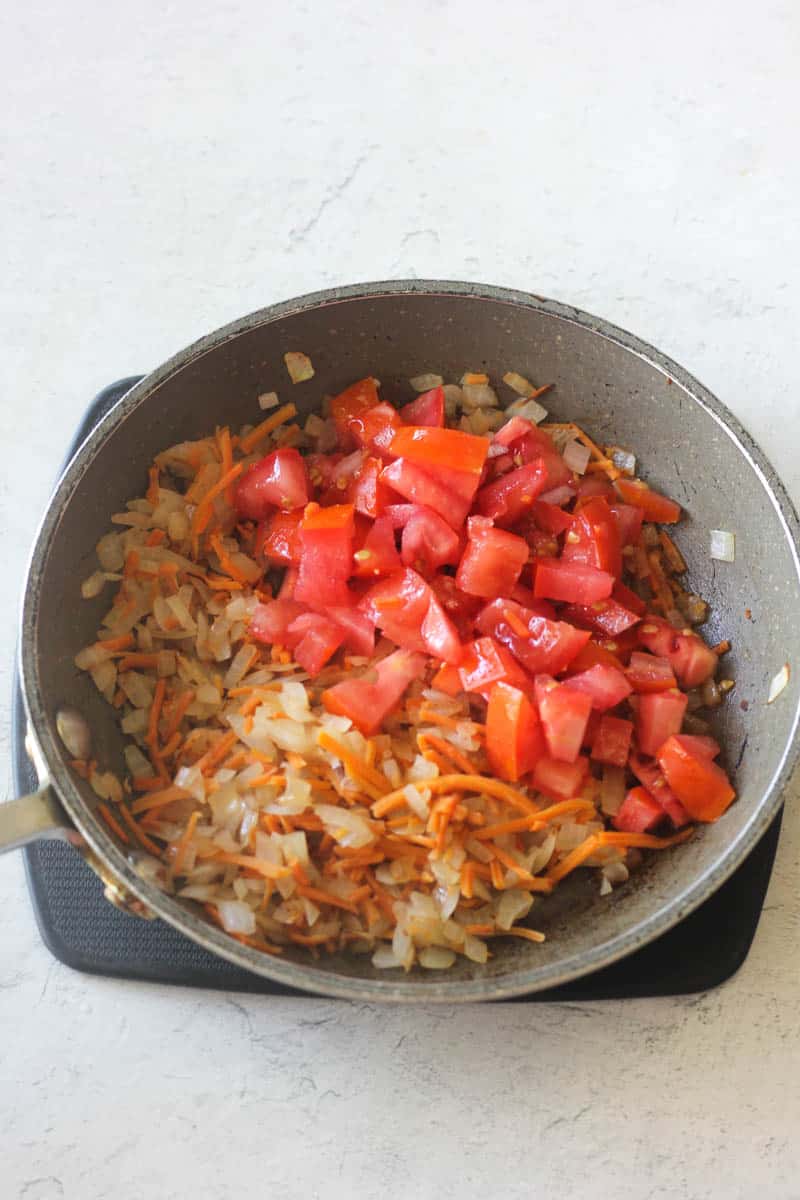
Once these veggies are cooked and infused with flavors, transfer them from the skillet into the pot containing the broth and potatoes. If you have some cubed salmon fillet on hand and want to include it, now's the time. Drop the salmon pieces into the pot and let everything simmer together for another 10 minutes.
Remember the fish heads you set aside earlier? Now, take some time to separate any edible fish meat from the bones. Discard the bones, keeping only the tender fish pieces.
Lastly, after the 10-minute simmer with the salmon, turn off your stove burner. Gently stir the separated fish meat back into the pot. For a final touch of flavor and freshness, sprinkle in some chopped dill. If you're inclined to add an umami touch, incorporate some fish sauce at this point, but this is optional based on personal preference.
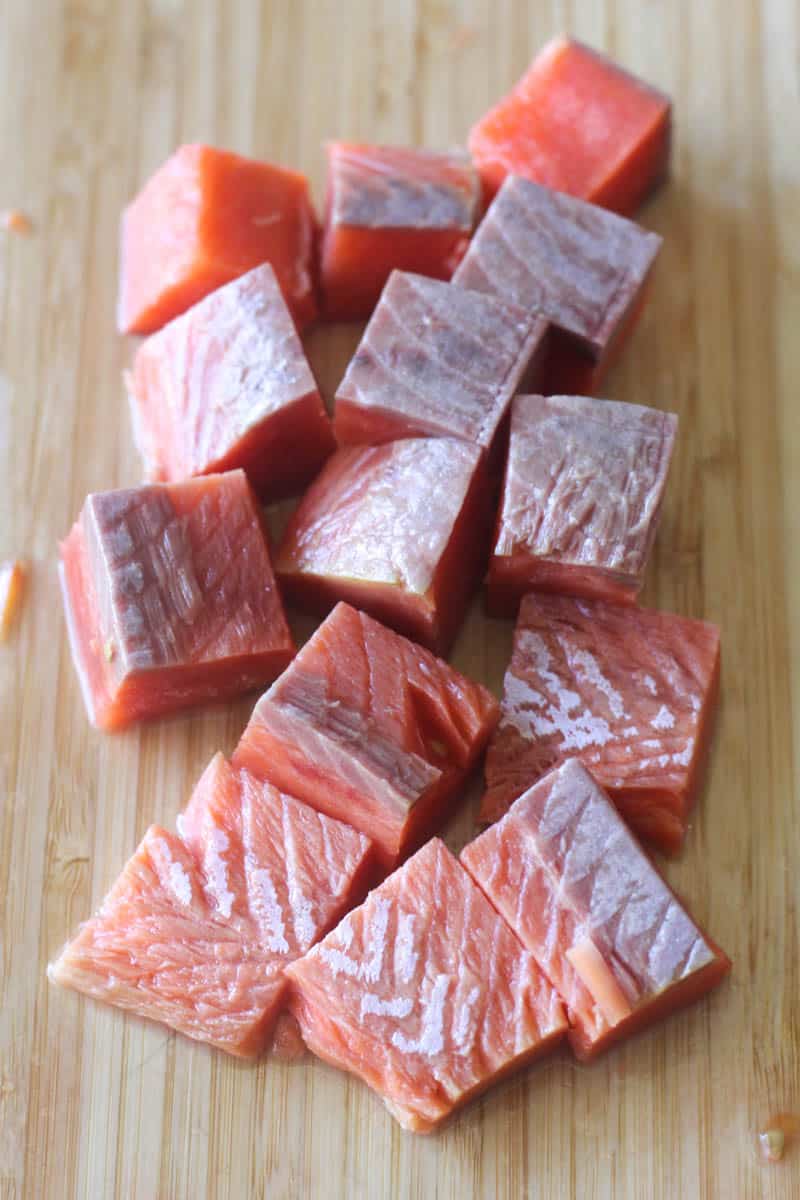
Pour in heavy cream to give the soup a luxurious, velvety texture. Give everything a gentle but thorough stir, making sure the ingredients meld seamlessly. Your fish head soup is now ready to be savored and enjoyed.
Would you like to save this?
Substitutions
Salmon head. Instead of whole salmon heads use a salmon frame this includes the head, tail, and any scraps. Ask your fishmonger and see what they recommend!
Potatoes. Use Yukon gold potatoes, red potatoes, fingerling potatoes, or any of your favorite waxy potato varieties. They will hold up the best in this soup.
Vegetables. Use whichever vegetables you have on hand or prefer. Chopped leeks, celery, fresh corn, green beans, button mushrooms, or minced garlic would be delicious additions.
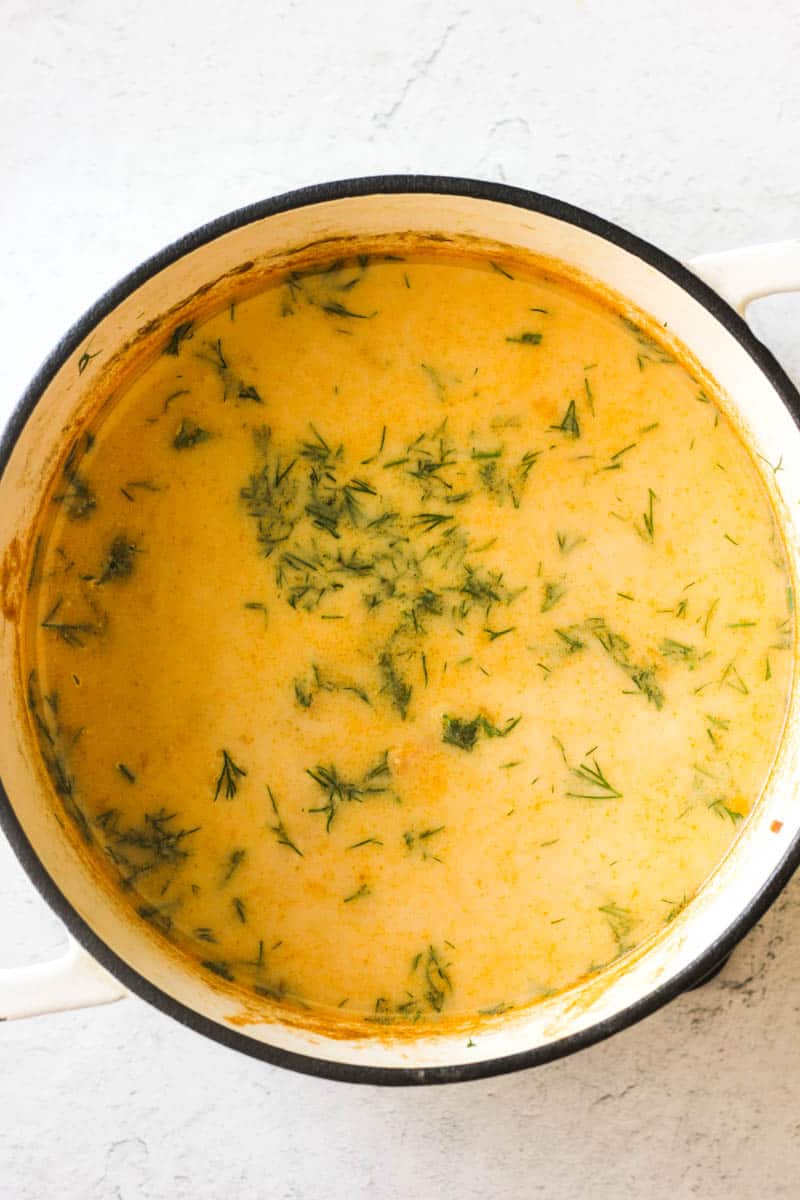
Variations
If you don't want to use salmon heads or can't find them use a couple of salmon fillets cut into cubes. Instead of water use seafood broth or chicken broth for added flavor!
If you want a thicker soup add a cornstarch slurry made with cold water and 1-2 teaspoons of cornstarch. Cook for a few minutes until it has thickened slightly then serve.
Dairy-free alternatives. If you are dairy-free use coconut cream or milk instead of heavy cream and use olive oil or margarine instead of butter!
Leave the head whole or debone before serving. Some people don't mind leaving the salmon head in their soup and serving it that way. You can decide to leave the heads whole or just before serving, deboning the meat and then returning it to the pot. This is great if you are serving small children or prefer to eat without having to deal with any bones.
Fish sauce notes
When you're cooking salmon head soup with fish sauce, the time you add it makes a difference.
- If you put it in at the beginning, like when you're making stews or long-cooked dishes, its strong flavor mixes in and becomes part of the overall taste. It's like a background note, making everything taste richer without being too obvious.
- On the other hand, if you sprinkle it in right before you're done cooking, especially in dishes like creamy soups, its taste stands out more. It'll give a clear and bold flavor of fish sauce.
So, depending on whether you want a soft hint or a strong taste of fish sauce in your dish, choose when to add it. And always give it a taste while cooking to get it just right.

Frequently asked questions
A great way to use fish heads is by making fish stock or bone broth out of them. They can also be added to your favorite fish soups or stews to give an extra boost of flavor. You can then decide to take them out or remove the meat from the bone to add it back in later.
Except for the bones, every part of the salmon head is edible (including the eyes)!
Eating salmon head will give you some of the same health benefits as eating the fillets. Salmon is an excellent source of omega-3 fatty acids, protein, collagen, and many essential vitamins and minerals.
Larger grocery stores usually carry fish heads or if you can't find them ask your fishmonger to see if they have them behind the counter because they usually do! I would also check out local seafood shops, farmer's markets, or online seafood delivery services as well!
Storage suggestions
Allow the salmon head soup to cool to room temperature before transferring it to airtight containers. For consumption within 2-3 days, store the soup in the refrigerator.
Freezing. For extended storage up to 2-3 months, freeze the soup, leaving an inch of space at the top of the container for expansion. Please note that the fat in heavy cream can separate when frozen and thawed, which may result in a grainy or separated texture when reheated. This doesn't make the soup unsafe to eat, but the texture can be different from when it was freshly made.
Reheat. Thaw frozen soup in the fridge overnight and reheat on the stove until hot throughout. Avoid refreezing thawed and reheated soup to maintain quality and safety. Always use clean utensils when serving to prevent contamination.
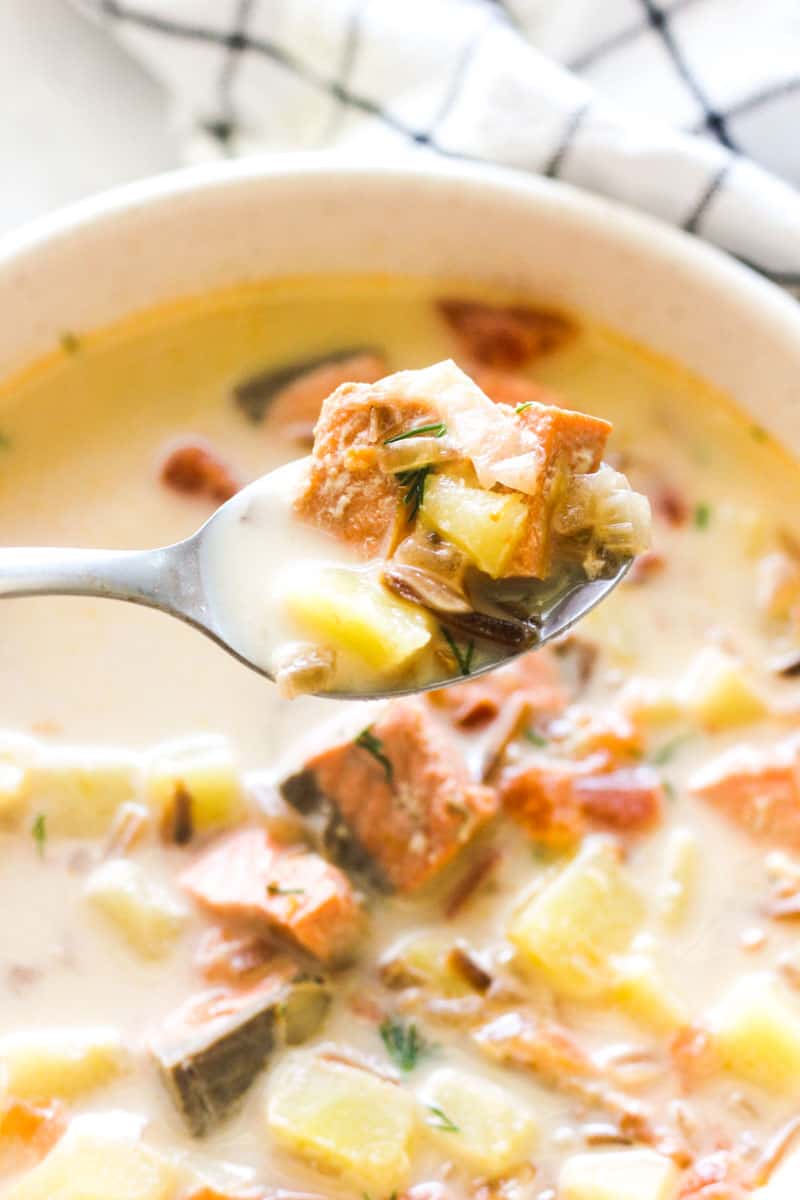
Expert notes and tips
- Ripe tomatoes add a slight sweetness and tang to the soup. If using canned tomatoes, choose good quality ones and drain them well.
- For a lighter version, you can substitute heavy cream with half-and-half. For the richest flavor, stick with the heavy cream and add it at the very end to avoid curdling.
- Be meticulous when separating the meat from the fish heads to avoid any small bones getting into the soup.
- Always use dried bay leaves for soups, as they impart a deeper flavor. Fresh bay leaves can sometimes have a slightly bitter taste.
- Cut your potatoes into uniform cubes for even cooking and a consistent texture in every bite.
You may also like...
- Bang bang salmon bites
- Air fryer jerk salmon recipe
- Neckbone soup
- Turkey neck soup
- Ninja Foodi potato soup
- Ninja Foodi frozen salmon
- Peking shrimp
- Baked swordfish
- Baked pollock
- Hake recipe
Hope you will like this salmon head soup as much as we do. Please rate the recipe if you made it and leave a comment below if you have any questions or suggestions.
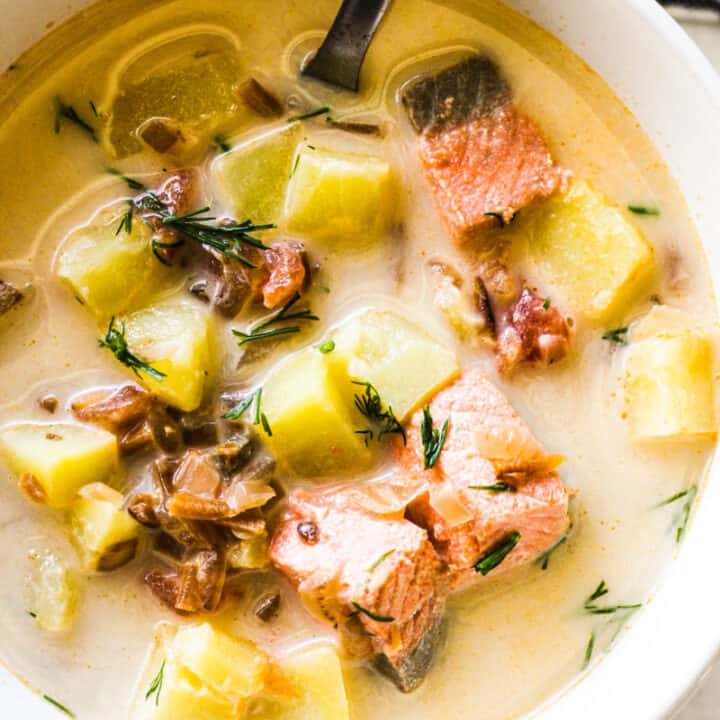
Salmon Head Soup
This creamy salmon head soup is hearty and totally comforting! Using whole salmon heads, chunky potatoes, fresh dill, and heavy cream this flavorful soup is satisfying and simple to make in under an hour!
Ingredients
- 1 salmon head
- 1 salmon fillet (optionally)
- 6 potatoes
- 8 cups water
- 1 carrot
- 1 onion
- 2 tomatoes
- 1 ½ cup heavy cream
- 2 tablespoon butter
- pinch of salt, adjust to taste
- ⅓ cup chopped dill
- 1 bay leaf
- 1 teaspoon black pepper, white pepper, each
- 3 cloves of garlic, chopped
- 1 tablespoon fish sauce, optionally
Instructions
- Wash fish heads really well. Place in the pot. Cover with water and add bay leaf. Add salt, pepper and white pepper. Bring to a boil and simmer for 20 minutes. Remove fish and set aside.
- Bring broth back to boil. Add cubed potatoes. Simmer for 10 minutes.
- Meanwhile melt butter in a small skillet. Add finely chopped onion and shredded carrot. Saute for 5 minutes, add chopped tomatoes, garlic and cook for another few minutes (with closed lid).
- Scoop vegetables into the pot. Add cubed salmon fillet if using and simmer for another 10 minutes. Meanwhile separate any fish from fish heads.
- Turn the burner off. Add fish to the pot along with chopped dill and heavy cream. Add fish sauce if using and serve hot.
Notes
Leftovers
Allow the salmon head soup to cool to room temperature before transferring it to airtight containers. For consumption within 2-3 days, store the soup in the refrigerator.
Freezing. For extended storage up to 2-3 months, freeze the soup, leaving an inch of space at the top of the container for expansion.
Reheat. Thaw frozen soup in the fridge overnight and reheat on the stove until hot throughout. Avoid refreezing thawed and reheated soup to maintain quality and safety. Always use clean utensils when serving to prevent contamination.
Nutrition Information:
Yield: 5 Serving Size: 1Amount Per Serving: Calories: 684Total Fat: 42gSaturated Fat: 22gTrans Fat: 1gUnsaturated Fat: 17gCholesterol: 150mgSodium: 182mgCarbohydrates: 50gFiber: 6gSugar: 7gProtein: 28g

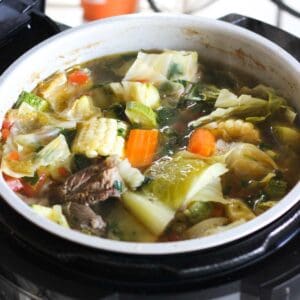

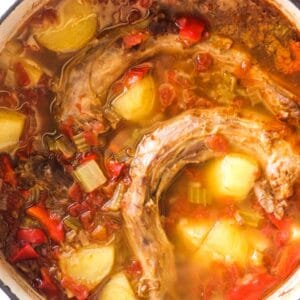

Leave a Reply